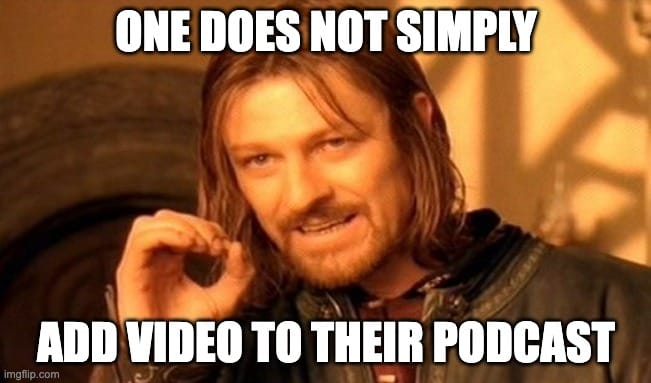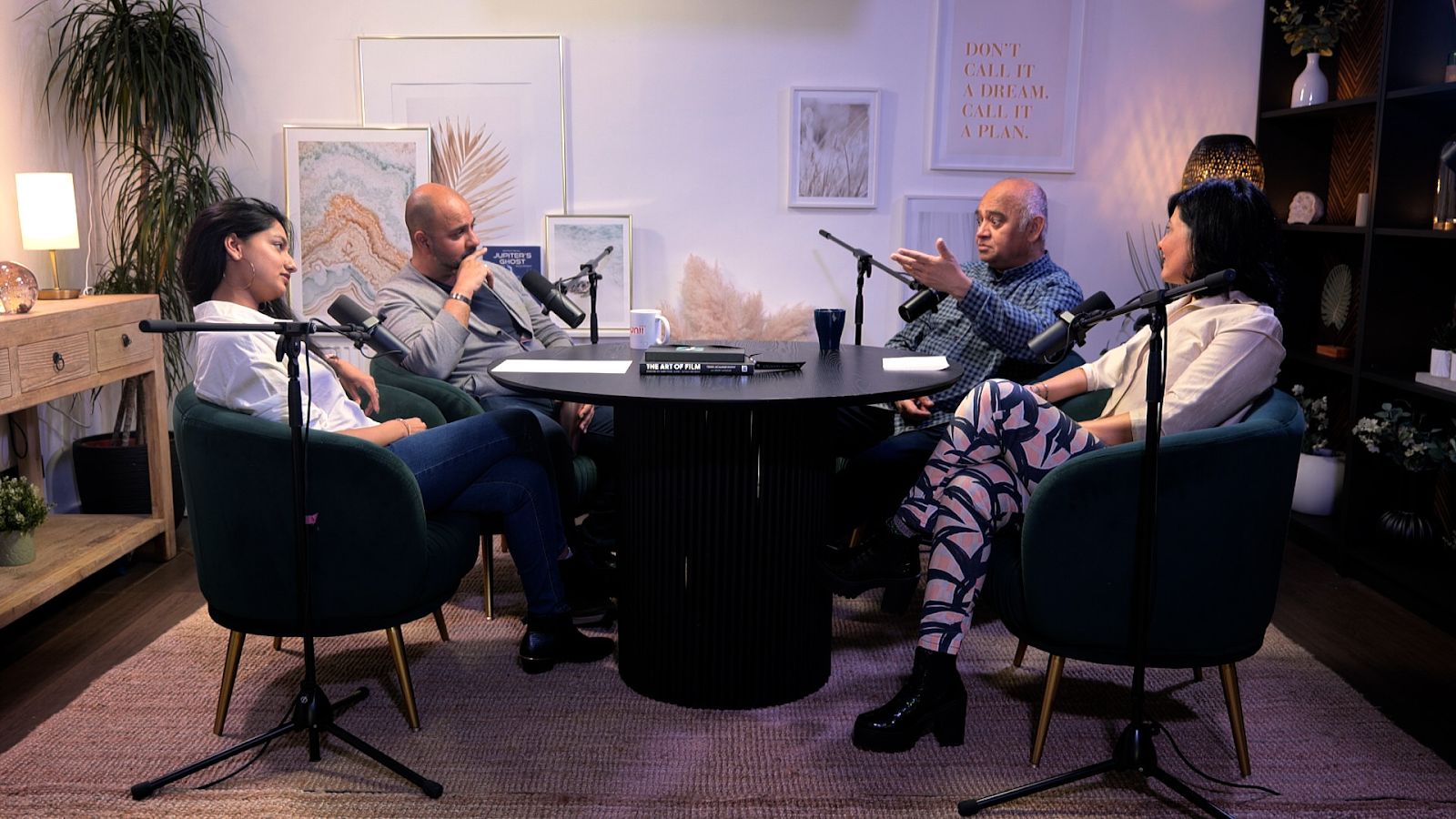- The Upload Club Newsletter
- Posts
- How To Bring Your Podcast Onto YouTube
How To Bring Your Podcast Onto YouTube
A practical guide to adding video without losing your cool.
Hey guys!
When I worked on the YouTube Podcast Acquisition team a few years back, selling top audio podcasters on the "power of YouTube" and why they needed to be on the platform was kind of rough…
To audio podcasters, adding a video component to your audio podcast sounded like a heavy task - expensive, time-consuming, and frankly, intimidating.

But now, when I talk to podcasters about YouTube, there's barely any need to pitch folks on "why YouTube." The question has shifted from "Should I?" to "How do I?"
So what changed?
After diving deep into this topic for the recent Podglomerate webinar (shoutout to AIR!), I'm here to break it down.
Here’s the TL;DR - you don't have to go from "audio-only" to "full cinematic production" overnight. There's a more digestible way to do this, and it involves… you guessed it: phases.
THE REALITY CHECK: WHAT THE WEBINAR TAUGHT US
During our panel with Spotify's Yih Lee and Podstream Studios’ Chris Colbert, a theme emerged pretty quickly: most audio producers are overthinking this.
Let me explain: you don't need to be perfect from day one. In fact, trying to be perfect from day one is likely what's holding you back.

Carmy shows us perfection is, in fact, the enemy.
THE PHASED APPROACH: FROM ZERO TO HERO (WITHOUT THE EXISTENTIAL CRISIS)
So, here’s how you drop the perfectionism and tackle video podcasting on YouTube:
PHASE 1: THE TRAINING WHEELS PHASE
AKA Static Images and Looped Animations
This is your "I'm testing the waters without drowning" phase. An animated loop or static image is completely fine as you're onboarding yourself onto YT.
Think of this like lyric videos for musicians. You're not showing your face, but you're giving YouTube's algorithm something to work with. Some options for this include:
Branded static images with speech-to-text overlays
Simple looped animations that match your vibe (Get Sleepy has some lovely one’s)
PHASE 2: THE TRADITIONAL SETUP
AKA The Huberman or Call Her Daddy Format

This is where most podcasters think they need to start, but I recommend working up to this in phase 2: you've tested the waters, learned the platform, and now you're ready for the classic "two-ish people talking into microphones" setup.
From a production standpoint, if you can’t build something in-house (which can sound like a lot, anyway!), there are hundreds of options across the globe you can use to capture the standard: 3-camera, 2-chair, 1-table, 2-mics set-up. Some examples -
Finchley Studios in the UK is fantastic
Lighthouse in Venice, CA is also awesome
Peerspace, Operation Podcast… the list goes on!

Already built, beautiful podcast studios complete with cameras and file sharing at your disposal [Source: Finchley Studios, UK]
PHASE 3: THE CREATIVE INTEGRATION
AKA Video-First Thinking
This is where the magic happens. You're not just recording audio and hoping for the best, you're thinking about the visual component during pre-production.
Pre-production becomes crucial here. Imagery and video that supplement the conversation can transform a good podcast into a top performing YouTube video. This is when you can go HAM on your output, just like my aspirational bestie: Cleo Abram.
Consider what can you visually show in the first few seconds to hook viewers. For example, could a motion graphic clarify a complex topic?
WHY YOUTUBE LOVES PODCASTS (AND VICE VERSA)
Here’s what we didn’t fully get into on the webinar, but it’s big:
YouTube is hungry for content that keeps people on the platform. And podcast episodes have a unique advantage, due to their long length, to achieve exactly that. However, while YouTube is part podcast discovery platform, it’s still a YouTube video discovery platform first. Basically, YouTube treats your episode like it’s any other long-form video on the home page.
So here’s the unlock: Your competition isn’t just other podcasts, it’s everything on the platform: news recaps, recipes, vlogs, RXN videos, hot takes.
Which leads me to my last point:
DON’T LET THUMBNAILS BE AN AFTERTHOUGHT
I’ve noticed a lot of podcasts defaulting to the same thumbnail template: headshots (usually pulled straight from the recording), episode numbers, and a quote from the episode dropped in the middle.
The problem? There’s real fatigue with this format. Viewers have seen it a lot, so unless you have a wildly recognizable guest or a shockingly clickable quote, you’re already playing catch up.
Why this matters? Your video isn’t just competing with other pods, it’s competing with whatever else is lighting up the homepage. Instead, your thumbnail needs to do what all great YouTube thumbnails do: Spark curiosity. Pose a question. Leave something unsaid.

Don’t be afraid to stand out from the (thumbnail) crowd!
IN SUMMARY
DON’T wait for perfection - The only mistake here is NOT to try, consistency beats perfection every time.
DON’T overthink the setup - You’ve got all the options both from a production and tech standpoint.
DON’T ignore the competition - Make a thumbnail that wins viewership by exceeding expectations.
You don't need to revolutionize your entire setup overnight. Start with Phase 1, get comfortable, then level up. The scariest upload is always the first one, but every upload after that gets easier.
Thanks for tuning in, you got this!
– Hayley